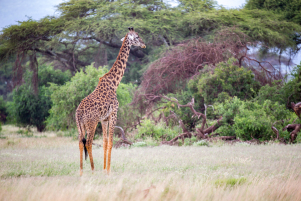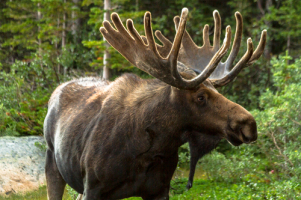Hoofed mammals are quadruped placental mammals classified in two orders, these being Artiodactyla(even toed), and Perissodactyla(odd toed). Some of the mammals classified in the Artiodactyla order include; antelope, cattle, deer, giraffes, goats, hippopotamus, and sheep. Perissodactyls include, horses, rhinoceros, tapirs, and zebras. Some hoofed mammals have been domesticated for meat, leather, and for use as beasts of burden.

Physical Characteristics
A hoof is the tip of a toe of either a Perissodactyl or Artiodactyl. The hoof is strengthened by a thick keratin covering; keratin is a fibrous protein that is also found in hair. Perissodactyls have a mesaxonic foot meaning that the weight is distributed on the third toe on all legs. Artiodactyls bear weight equally on two of their five toes; the third and fourth. While the majority of mammals classified in the Artiodactyla order have hooves, the Hippopotamus is an exception, instead of hooves, there is a pad of connective tissue on each foot. Many hoofed mammals have specialized stomachs that assist them in digesting all the vegetation they eat.
Many species have cranial appendages, Most deer have extensions of their skulls, that are composed of bone, cartilage, fibrous tissue, skin, nerves, and blood vessels, these extensions of the skulls are known as antlers. With the exception of the Caribou(Rangifer tarandus), only male deer grow antlers. The males of most deer species shed their antlers after the mating season, but will grow them back in time for the next year’s mating season. The antlers function primarily as objects of sexual attraction and as weapons in fights between males for mating rights. Giraffids have columnar or conical skin-covered bone structures on their heads that are called ossicones. Most species of cattle, goats, sheep, and antelope have horns. A horn is a permanent pointed protrusion on the head of many hoofed mammals. Horns consist of a covering of keratin and other proteins surrounding a core of bone. Rhinoceroses grow horns on the upper surface of their snout, these horns are made of keratin, Rhinoceros horns grow continuously, and do not have a bone core. The Lesser Mouse-Deer(Tragulus kanchil) is the smallest hoofed mammal in the world weighing as little as 2 kilograms, and the White Rhinoceros(Ceratotherium simum) is the largest, reaching weights up to 3,600 kilograms.

Distribution and Habitat
Wild hoofed mammals that are native to their ranges can be found on all continents with the exception of Australia and Antarctica, however there are feral populations living in Australia. Hoofed mammals inhabit; deserts, forests, grasslands, marshy areas, plains, rocky areas, savannah, shrublands, and tundra.
Diet
Most hoofed mammals are herbivores, this means they only eat vegetation. There are two types of herbivore, grazing herbivores, and browsing herbivores. Grazing herbivores eat primarily grasses, and browsing herbivores eat leaves, soft shoots, or fruits of high-growing, generally woody plants. Not all hoofed mammals eat 100% plant material, camels have been known to eat carrion(the flesh of dead animals), and many members of the pig family eat carrion, and small animals.
Beasts of Burden
Beasts of burden are working animals that are kept by humans and trained to do jobs instead of being slaughtered to make animal products. Draft animals are beasts of burden, they provide transportation, or assist in physical labor. Beasts of burden may also be used for milking or herding. Some, at the end of their working lives, may also be used for meat or other products such as leather.
